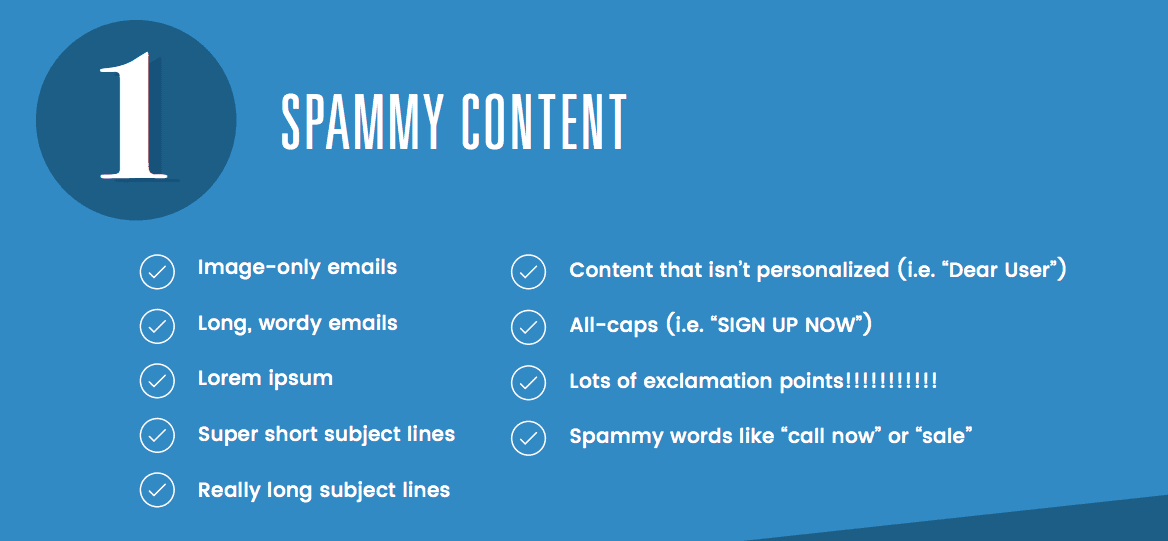Email Deliverability
5 Ways to Boost Your Brand’s Email Deliverability

Email Deliverability

In collaboration with Campaign Monitor
Email deliverability is often an afterthought for email marketers because it seems out of their control. How can you possibly increase the percentage of email that hits an inbox?
While email deliverability may seem detailed and tough to tackle, there are a few trustworthy methods you can implement to ensure quality deliverability and maintain a great sender reputation.
Staying up-to-date and routinely following best practices are your keys to success in email marketing. After all, even the greatest emails lose their effectiveness if they aren’t getting in front of your subscribers.
Simply put, email deliverability refers to your campaign’s ability to land in a subscriber’s inbox without bouncing or being marked as spam. Sending an email without custom authentication can increase the risk of it being blocked or filtered as spam. Similarly, using a double opt-in list and having a clear unsubscribe link improves overall list health and engagement. These elements help maintain your sender reputation and directly affect your email deliverability and success.
In the email world, there’s been quite a bit of fuss over this topic—and for good reason, too. Deliverability determines whether your message will make it in front of your subscribers, which means it directly correlates with readership, engagement and conversion. And why would you allocate resources to emails that will never get seen?
With a little background knowledge and special attention to detail, you can improve your deliverability while simultaneously boosting readership and increasing ROI for your email marketing.
Standing behind every deliverability roadblock are some best practices you can implement in your email strategy to increase deliverability, boost readership and, ultimately, drive conversion. Here are five you can put into practice today, starting with welcome emails.
Not only do welcome emails act as your introduction to new subscribers and customers, they are also a key factor in boosting your email domain’s sender reputation due to high engagement with new subscribers.
Welcome emails are your first—and most obvious—opportunity to include a permission reminder: a short message to remind new subscribers why they’re receiving your emails and how they joined your list. These brief introductions re-familiarize readers with your brand and allow them to note your message as legitimate and trustworthy—instead of marking it as spam.
These emails generally afford a 50% open rate, making them 86% more effective on average than standard newsletters. An open rate of that caliber acts as further proof for email clients that messages coming from your domain are safe, not spam.
Additionally, welcome emails serve as your chance to make the perfect first impression and engage subscribers in all the right ways.
This email from Hims is a wonderful example of how to properly welcome your newest subscribers. Notice that the email clearly states why the reader is receiving the message, as well as a prominent CTA to convert. Lastly, the email provides a clear unsubscribe button, should the reader have second thoughts about opting in.

Hiding your unsubscribe link may seem like a secret way to keep readers on your list, but it could actually be hurting your deliverability.
At the end of the day, if a subscriber doesn’t want to receive emails from your brand, they’ll find a way to make that happen, even to the detriment of your brand’s reputation. A reader who wants to unsubscribe from your list but struggles to find the link will only become more frustrated and flustered by the process, leading to much worse results for you than a simple decrease in subscribers.
Oftentimes these annoyed readers will give up on locating an unsubscribe link and will instead mark your email as spam. Their problem has officially been solved—and they’ve given you a much worse one.
Adding permission reminders and offering a visible unsubscribe link keeps your brand honest and trustworthy, something all subscribers—even the unengaged—can appreciate. And besides that, it’s also the law—hiding an unsubscribe option is both a marketing ethics and legal violation.
Take this email from Soho House, for example. An unengaged reader can easily unsubscribe without the hassle of scanning through a wall of 8pt text—or even worse, hitting the spam button.

While we’re on the topic of unengaged readers, let’s look at how to re-engage those email ghosts.
In the world of email deliverability, low open rates often point directly to unengaged subscribers.
Sending emails to these readers is not only a waste of money and resources, but it can also lead to your campaigns being blocked or filtered to the spam folder. It’s a domino effect that begins with unengaged subscribers and low open rates, which then turns to a poor sender reputation and blocked or filtered emails, which ultimately results in even lower open rates and a further lack of engagement.
Instead of damaging your sender reputation by pushing out emails to subscribers who never open, consider a re-engagement campaign to spark interest once again.
Re-engagement campaigns offer an opportunity to reconnect with silent subscribers, showing them you care about their interests and reminding them why they should be engaging with your messages.
After properly running a thorough re-engagement campaign, you’ll be able to quickly identify and remove subscribers who are no longer interested in your brand.
This example from BuzzFeed perfectly illustrates the art of re-engagement.

In the past, using certain words and phrases could get your email blocked by inbox providers’ spam defenses. However, email providers are now much more skilled at filtering out spam from legitimate messages, so minimal use of these words won’t necessarily raise any red flags. In fact, engagement now serves as a major indicator of how frequently emails are filtered into spam, preventing blocklist words from automatically triggering spam defenses.

Though it is still recommended to avoid certain words and phrases when possible and grab your audience’s attention with other means. Anything that may appear spammy (like, BUY NOW! FREE! etc.) should be avoided, particularly in the subject line.
You can see a list of these words and phrases—455 to be exact—on the Prospect.io blog.
If you want to ensure that your copy passes the spam-free test, you can use tools to help identify words and phrases that will trigger these inbox defenses. Postmark provides an overall rating on your copy, with green indicating that you’re good to go, whereas Email Copy Checker highlights all the triggered words you’ve included in your text.
How often you send emails can play a role in how engaged your audience is. Sending too often can lead to inbox fatigue and drive down open rates. Sending too infrequently—like once every 12 months—can also increase the risk that people forget how and where they signed up for your emails, marking them as spam.
Having a consistent frequency of emails means your subscribers know what to expect, and consistency also gives you insight into how engaged and interested your audience is.
With a proper schedule in place, you can also begin testing to see when your subscribers are most likely to engage. For example, many studies (even our own) suggest that emails produce higher open rates on Tuesdays and Thursdays between 10 a.m. and 11 a.m.
However, all campaigns are different, so testing to see what works best for your subscribers is a great way to increase your open rates. As we all know, increased open rates lead to increased engagement, which ultimately betters future deliverability.
Email deliverability is a crucial player in the email marketing game and a big reason for blocked campaigns. Understanding the details that go into email deliverability and executing best practices keeps you in control of yours.
Nurturing new subscribers, monitoring audience engagement, re-engaging inactive contacts and regularly removing dormant emails will dramatically improve your list’s health and engagement. Staying on top of your deliverability and the methods to improve it will make for more successful campaigns and an increase in ROI for your email marketing.